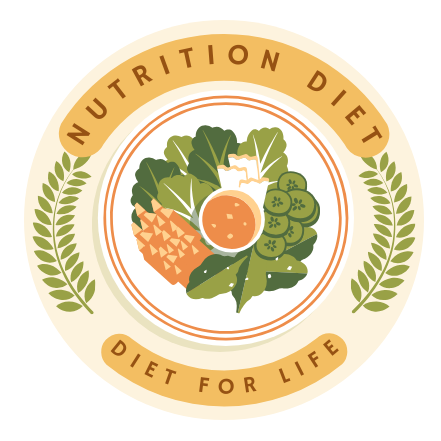Nutritional choices, which profoundly affect health and well-being, are shaped by a wide range of factors that include personal preferences, biological needs, socio-economic status, and lifestyle. However, among the most influential forces in shaping the dietary patterns of individuals are family dynamics and cultural norms. These factors dictate not only what foods people consume, but how they prepare, present, and share meals. From childhood to adulthood, family and culture influence food choices in ways that transcend basic nutrition. They touch on social, psychological, and emotional aspects of eating. This guide delves into how family structures, cultural heritage, and societal trends impact the nutritional choices individuals make, and how these influences evolve over a lifetime.
The Role of Family in Nutritional Choices
Family plays a crucial role in the formation of an individual’s eating habits. From the moment a child is born, food choices are often made for them by parents or guardians. As children grow and develop, they are exposed to specific dietary patterns, cooking techniques, and values surrounding food, which are reinforced by family members. The food environment in the home, the cultural importance placed on certain meals, and the daily routine surrounding eating all contribute to the development of long-lasting food preferences. In this section, we will explore the different ways in which families influence nutritional choices, focusing on early life experiences, family meal practices, and socioeconomic factors.
Family Dynamics and Early Food Preferences
The influence of family on nutrition starts before a child is even born. During pregnancy, a mother’s diet can have lasting effects on the preferences and behaviors of the child. Research suggests that the flavors and nutrients a mother consumes during pregnancy can be transferred to the developing fetus through amniotic fluid. This early exposure to specific tastes can shape a child’s preferences for certain foods, especially fruits and vegetables, later in life.
Once a child is born, their nutritional habits are predominantly influenced by the family environment. The introduction of solid foods during infancy is often guided by family customs, with parents deciding when and how certain foods are introduced. For example, some cultures emphasize rice or millet as the first foods for infants, while others might prioritize vegetables, fruits, or porridge. These early experiences set the stage for future food choices.
As children grow, they learn from observing family members. The types of foods their parents or caregivers consume on a regular basis, as well as the attitudes toward food, significantly impact a child’s eating behavior. If parents regularly eat home-cooked meals rich in vegetables and fruits, children are more likely to develop a taste for these foods. Conversely, if a family is accustomed to eating processed or fast food, children may grow up with a preference for these less nutritious options.
The Importance of Family Meals
One of the most significant ways in which families influence nutrition is through the practice of eating together. Family meals are a cornerstone of many cultures, providing an opportunity for bonding, communication, and the transmission of food-related knowledge. Studies have shown that families who eat together regularly tend to have healthier diets. This is partly due to the fact that family meals are often made at home, where parents have more control over the ingredients and cooking methods, leading to better nutrition compared to meals eaten outside the home.
Moreover, family meals serve as a time for socialization and education, where children can learn about table manners, portion control, and the importance of eating balanced meals. Family mealtime traditions also provide emotional benefits. The act of sharing food together can foster a sense of community and security, which may influence how children develop attitudes toward food. The emotional connection created during family meals can lead to more mindful eating and healthier food choices.
Research also suggests that family meals contribute to positive health outcomes, including lower rates of obesity and eating disorders. When families make a conscious effort to eat together, they are more likely to eat a variety of foods, including fruits, vegetables, whole grains, and lean proteins. Furthermore, the practice of sitting down to a meal at regular times throughout the day helps establish a routine, which can help in regulating appetite and avoiding overeating.
However, in today’s fast-paced world, family meals are increasingly becoming less frequent. Factors such as busy work schedules, extracurricular activities, and the prevalence of take-out food contribute to the decline of this tradition in many households. In these cases, children may miss out on the opportunities to learn about healthy eating habits and the social aspects of dining. This shift can contribute to poor dietary choices and a lack of knowledge about nutrition.
Socioeconomic Status and Family Nutrition
The financial situation of a family also has a significant impact on the types of foods consumed. Families with higher incomes are more likely to afford fresh produce, organic foods, and other nutrient-dense options. They may also have the time and resources to engage in home-cooking, which allows for better control over nutritional content. In contrast, families with limited financial resources may face challenges in accessing healthy food options. These families might rely on inexpensive processed foods, which are often high in sugar, unhealthy fats, and salt.
Low-income families often struggle with food insecurity, a situation where access to sufficient and nutritious food is uncertain or limited. This can result in poorer nutrition outcomes, as families may opt for cheaper, calorie-dense foods that provide temporary satisfaction but lack essential nutrients. The cycle of food insecurity can also have long-term health consequences, contributing to obesity, malnutrition, and chronic diseases such as diabetes and hypertension.
Moreover, the time constraints faced by working parents in low-income families may make it more difficult to prepare balanced meals at home. With little time to spare, these families may rely on convenience foods, such as frozen dinners, fast food, or packaged snacks, which are often high in unhealthy ingredients and low in nutritional value.
Public health initiatives aimed at alleviating food insecurity, such as food assistance programs and community-based nutrition education, play an important role in helping families make healthier choices. However, these solutions must also address the root causes of socioeconomic disparities in food access, including systemic inequalities and poverty.
The Role of Culture in Nutritional Choices
While family shapes the individual’s food environment, culture shapes the broader context in which food choices are made. Culture encompasses the shared beliefs, values, customs, and practices of a group of people, and food is a central aspect of cultural identity. What people eat, how they prepare their meals, and the rituals surrounding food are often deeply intertwined with cultural traditions. In this section, we will explore the various ways in which culture influences nutrition, including the role of traditional foods, food taboos, and cultural shifts in the globalized world.
Traditional Foods and Eating Patterns
Every culture has its own unique culinary traditions, which influence food choices from childhood through adulthood. These traditions are often passed down through generations, with family recipes and cooking techniques serving as a form of cultural expression. For example, the Mediterranean diet emphasizes fresh fruits and vegetables, whole grains, legumes, and olive oil, which are staples of the region’s culinary heritage. Similarly, in many Asian cultures, rice, noodles, and a variety of vegetables and legumes form the foundation of daily meals.
Traditional diets are often seen as a reflection of the local environment, with indigenous foods reflecting what is readily available in the region. In addition to being practical, traditional diets are also tied to cultural identity and community values. For instance, food is often used to mark important cultural and religious events, such as weddings, holidays, and religious ceremonies. These communal meals are not only about nourishment but also about reinforcing social bonds and cultural heritage.
Many traditional diets have been praised for their health benefits. The plant-based focus of the Mediterranean diet, for example, is associated with lower rates of heart disease and diabetes. Similarly, the Japanese diet, which emphasizes fish, vegetables, and rice, is linked to longevity and low obesity rates. The key to the health benefits of these diets lies in the balance of nutrients and the emphasis on whole, minimally processed foods.
However, cultural food traditions are not always synonymous with healthy eating. Some cultural practices may involve the consumption of high-calorie, high-fat foods, such as fried dishes or rich, creamy sauces. These foods, while deeply rooted in tradition, may contribute to the rise of obesity and other chronic diseases, particularly when consumed in excess. Additionally, cultural celebrations often involve indulgent eating, which can lead to overconsumption of unhealthy foods.
Food Taboos and Religious Dietary Restrictions
Food taboos, restrictions, and beliefs are important cultural factors that influence nutritional choices. In many cultures, specific foods are avoided due to religious or moral beliefs. For example, many Hindus refrain from eating beef as a sign of respect for the cow, which is considered sacred. Similarly, Muslims and Jews avoid pork for religious reasons, and many adherents of Buddhism follow vegetarian or vegan diets as a means of minimizing harm to animals.
These dietary restrictions can have significant health implications. For example, the avoidance of animal products can sometimes lead to nutrient deficiencies, particularly in vitamins B12 and D, iron, and protein. However, many people who follow restrictive diets manage their nutrition by substituting plant-based sources of these nutrients. In some cultures, fasting practices are also prevalent, which can affect an individual’s nutritional status.
Food taboos and restrictions are also tied to notions of purity, health, and spirituality. In certain cultures, fasting or avoiding certain foods is seen as a way to cleanse the body or attain spiritual enlightenment. While these practices may offer health benefits when done appropriately, they can also lead to unhealthy behaviors if they result in extreme dietary restrictions or malnutrition.
Cultural Shifts and Globalization
As the world becomes more interconnected, traditional food cultures are being influenced by globalization and the increasing availability of processed foods. Western fast food chains, such as McDonald’s, KFC, and Starbucks, have expanded globally, bringing with them eating habits and food choices that are often high in calories, fats, and sugars. In some countries, traditional diets are being replaced by Western-style fast foods, which can lead to rising rates of obesity, diabetes, and heart disease.
In countries where traditional diets are already high in fats and sugars, the addition of Western-style processed foods can exacerbate these health issues. For example, the adoption of fast food culture in countries like China and India has contributed to growing concerns about obesity and non-communicable diseases in these regions. The influence of Western culture on food choices can also lead to a loss of traditional food knowledge, with younger generations opting for convenience over the preparation of healthy, home-cooked meals.
However, globalization also presents an opportunity for cultural exchange and the sharing of healthy food practices. For example, the growing popularity of the Mediterranean diet in Western countries reflects a desire for healthier eating, and many people are beginning to embrace plant-based eating inspired by cultures that prioritize vegetables and grains.
Family, Culture, and Health Education
Promoting healthy eating requires a multifaceted approach that includes family involvement, cultural sensitivity, and education. Health education programs designed to improve nutrition should consider both the family dynamics and cultural context of the target population. By emphasizing the importance of balanced diets, healthy cooking techniques, and the benefits of family meals, these programs can help families make healthier choices while respecting cultural preferences.
Moreover, community-based initiatives that address food insecurity, teach cooking skills, and provide access to fresh produce are essential in improving nutrition at the population level. Encouraging cultural leaders to promote healthy eating within their communities can help bridge the gap between tradition and modern health needs.
Conclusion
The influence of family and culture on nutritional choices is profound and multifaceted. Family dynamics shape the earliest food preferences, and cultural traditions provide the broader context for food choices throughout life. From childhood through adulthood, the family remains a key influence on eating habits, while cultural norms and beliefs dictate the foods that are celebrated, avoided, or revered. As we navigate a globalized world with shifting dietary patterns, it is important to recognize the ways in which family and culture interact with health education to promote healthier, more sustainable food choices. By understanding these influences, we can create interventions that respect cultural heritage while encouraging healthier eating for future generations.
SOURCES
The Influence of Family and Culture on Nutritional Choices
Nutritional choices, which profoundly affect health and well-being, are shaped by a wide range of factors that include personal preferences, biological needs, socio-economic status, and lifestyle. However, among the most influential forces in shaping the dietary patterns of individuals are family dynamics and cultural norms. These factors dictate not only what foods people consume, but how they prepare, present, and share meals. From childhood to adulthood, family and culture influence food choices in ways that transcend basic nutrition. They touch on social, psychological, and emotional aspects of eating. This guide delves into how family structures, cultural heritage, and societal trends impact the nutritional choices individuals make, and how these influences evolve over a lifetime.
The Role of Family in Nutritional Choices
Family plays a crucial role in the formation of an individual’s eating habits. From the moment a child is born, food choices are often made for them by parents or guardians. As children grow and develop, they are exposed to specific dietary patterns, cooking techniques, and values surrounding food, which are reinforced by family members. The food environment in the home, the cultural importance placed on certain meals, and the daily routine surrounding eating all contribute to the development of long-lasting food preferences. In this section, we will explore the different ways in which families influence nutritional choices, focusing on early life experiences, family meal practices, and socioeconomic factors.
Family Dynamics and Early Food Preferences
The influence of family on nutrition starts before a child is even born. During pregnancy, a mother’s diet can have lasting effects on the preferences and behaviors of the child. Research suggests that the flavors and nutrients a mother consumes during pregnancy can be transferred to the developing fetus through amniotic fluid. This early exposure to specific tastes can shape a child’s preferences for certain foods, especially fruits and vegetables, later in life.
Once a child is born, their nutritional habits are predominantly influenced by the family environment. The introduction of solid foods during infancy is often guided by family customs, with parents deciding when and how certain foods are introduced. For example, some cultures emphasize rice or millet as the first foods for infants, while others might prioritize vegetables, fruits, or porridge. These early experiences set the stage for future food choices.
As children grow, they learn from observing family members. The types of foods their parents or caregivers consume on a regular basis, as well as the attitudes toward food, significantly impact a child’s eating behavior. If parents regularly eat home-cooked meals rich in vegetables and fruits, children are more likely to develop a taste for these foods. Conversely, if a family is accustomed to eating processed or fast food, children may grow up with a preference for these less nutritious options.
The Importance of Family Meals
One of the most significant ways in which families influence nutrition is through the practice of eating together. Family meals are a cornerstone of many cultures, providing an opportunity for bonding, communication, and the transmission of food-related knowledge. Studies have shown that families who eat together regularly tend to have healthier diets. This is partly due to the fact that family meals are often made at home, where parents have more control over the ingredients and cooking methods, leading to better nutrition compared to meals eaten outside the home.
Moreover, family meals serve as a time for socialization and education, where children can learn about table manners, portion control, and the importance of eating balanced meals. Family mealtime traditions also provide emotional benefits. The act of sharing food together can foster a sense of community and security, which may influence how children develop attitudes toward food. The emotional connection created during family meals can lead to more mindful eating and healthier food choices.
Research also suggests that family meals contribute to positive health outcomes, including lower rates of obesity and eating disorders. When families make a conscious effort to eat together, they are more likely to eat a variety of foods, including fruits, vegetables, whole grains, and lean proteins. Furthermore, the practice of sitting down to a meal at regular times throughout the day helps establish a routine, which can help in regulating appetite and avoiding overeating.
However, in today’s fast-paced world, family meals are increasingly becoming less frequent. Factors such as busy work schedules, extracurricular activities, and the prevalence of take-out food contribute to the decline of this tradition in many households. In these cases, children may miss out on the opportunities to learn about healthy eating habits and the social aspects of dining. This shift can contribute to poor dietary choices and a lack of knowledge about nutrition.
Socioeconomic Status and Family Nutrition
The financial situation of a family also has a significant impact on the types of foods consumed. Families with higher incomes are more likely to afford fresh produce, organic foods, and other nutrient-dense options. They may also have the time and resources to engage in home-cooking, which allows for better control over nutritional content. In contrast, families with limited financial resources may face challenges in accessing healthy food options. These families might rely on inexpensive processed foods, which are often high in sugar, unhealthy fats, and salt.
Low-income families often struggle with food insecurity, a situation where access to sufficient and nutritious food is uncertain or limited. This can result in poorer nutrition outcomes, as families may opt for cheaper, calorie-dense foods that provide temporary satisfaction but lack essential nutrients. The cycle of food insecurity can also have long-term health consequences, contributing to obesity, malnutrition, and chronic diseases such as diabetes and hypertension.
Moreover, the time constraints faced by working parents in low-income families may make it more difficult to prepare balanced meals at home. With little time to spare, these families may rely on convenience foods, such as frozen dinners, fast food, or packaged snacks, which are often high in unhealthy ingredients and low in nutritional value.
Public health initiatives aimed at alleviating food insecurity, such as food assistance programs and community-based nutrition education, play an important role in helping families make healthier choices. However, these solutions must also address the root causes of socioeconomic disparities in food access, including systemic inequalities and poverty.
The Role of Culture in Nutritional Choices
While family shapes the individual’s food environment, culture shapes the broader context in which food choices are made. Culture encompasses the shared beliefs, values, customs, and practices of a group of people, and food is a central aspect of cultural identity. What people eat, how they prepare their meals, and the rituals surrounding food are often deeply intertwined with cultural traditions. In this section, we will explore the various ways in which culture influences nutrition, including the role of traditional foods, food taboos, and cultural shifts in the globalized world.
Traditional Foods and Eating Patterns
Every culture has its own unique culinary traditions, which influence food choices from childhood through adulthood. These traditions are often passed down through generations, with family recipes and cooking techniques serving as a form of cultural expression. For example, the Mediterranean diet emphasizes fresh fruits and vegetables, whole grains, legumes, and olive oil, which are staples of the region’s culinary heritage. Similarly, in many Asian cultures, rice, noodles, and a variety of vegetables and legumes form the foundation of daily meals.
Traditional diets are often seen as a reflection of the local environment, with indigenous foods reflecting what is readily available in the region. In addition to being practical, traditional diets are also tied to cultural identity and community values. For instance, food is often used to mark important cultural and religious events, such as weddings, holidays, and religious ceremonies. These communal meals are not only about nourishment but also about reinforcing social bonds and cultural heritage.
Many traditional diets have been praised for their health benefits. The plant-based focus of the Mediterranean diet, for example, is associated with lower rates of heart disease and diabetes. Similarly, the Japanese diet, which emphasizes fish, vegetables, and rice, is linked to longevity and low obesity rates. The key to the health benefits of these diets lies in the balance of nutrients and the emphasis on whole, minimally processed foods.
However, cultural food traditions are not always synonymous with healthy eating. Some cultural practices may involve the consumption of high-calorie, high-fat foods, such as fried dishes or rich, creamy sauces. These foods, while deeply rooted in tradition, may contribute to the rise of obesity and other chronic diseases, particularly when consumed in excess. Additionally, cultural celebrations often involve indulgent eating, which can lead to overconsumption of unhealthy foods.
Food Taboos and Religious Dietary Restrictions
Food taboos, restrictions, and beliefs are important cultural factors that influence nutritional choices. In many cultures, specific foods are avoided due to religious or moral beliefs. For example, many Hindus refrain from eating beef as a sign of respect for the cow, which is considered sacred. Similarly, Muslims and Jews avoid pork for religious reasons, and many adherents of Buddhism follow vegetarian or vegan diets as a means of minimizing harm to animals.
These dietary restrictions can have significant health implications. For example, the avoidance of animal products can sometimes lead to nutrient deficiencies, particularly in vitamins B12 and D, iron, and protein. However, many people who follow restrictive diets manage their nutrition by substituting plant-based sources of these nutrients. In some cultures, fasting practices are also prevalent, which can affect an individual’s nutritional status.
Food taboos and restrictions are also tied to notions of purity, health, and spirituality. In certain cultures, fasting or avoiding certain foods is seen as a way to cleanse the body or attain spiritual enlightenment. While these practices may offer health benefits when done appropriately, they can also lead to unhealthy behaviors if they result in extreme dietary restrictions or malnutrition.
Cultural Shifts and Globalization
As the world becomes more interconnected, traditional food cultures are being influenced by globalization and the increasing availability of processed foods. Western fast food chains, such as McDonald’s, KFC, and Starbucks, have expanded globally, bringing with them eating habits and food choices that are often high in calories, fats, and sugars. In some countries, traditional diets are being replaced by Western-style fast foods, which can lead to rising rates of obesity, diabetes, and heart disease.
In countries where traditional diets are already high in fats and sugars, the addition of Western-style processed foods can exacerbate these health issues. For example, the adoption of fast food culture in countries like China and India has contributed to growing concerns about obesity and non-communicable diseases in these regions. The influence of Western culture on food choices can also lead to a loss of traditional food knowledge, with younger generations opting for convenience over the preparation of healthy, home-cooked meals.
However, globalization also presents an opportunity for cultural exchange and the sharing of healthy food practices. For example, the growing popularity of the Mediterranean diet in Western countries reflects a desire for healthier eating, and many people are beginning to embrace plant-based eating inspired by cultures that prioritize vegetables and grains.
Family, Culture, and Health Education
Promoting healthy eating requires a multifaceted approach that includes family involvement, cultural sensitivity, and education. Health education programs designed to improve nutrition should consider both the family dynamics and cultural context of the target population. By emphasizing the importance of balanced diets, healthy cooking techniques, and the benefits of family meals, these programs can help families make healthier choices while respecting cultural preferences.
Moreover, community-based initiatives that address food insecurity, teach cooking skills, and provide access to fresh produce are essential in improving nutrition at the population level. Encouraging cultural leaders to promote healthy eating within their communities can help bridge the gap between tradition and modern health needs.
Conclusion
The influence of family and culture on nutritional choices is profound and multifaceted. Family dynamics shape the earliest food preferences, and cultural traditions provide the broader context for food choices throughout life. From childhood through adulthood, the family remains a key influence on eating habits, while cultural norms and beliefs dictate the foods that are celebrated, avoided, or revered. As we navigate a globalized world with shifting dietary patterns, it is important to recognize the ways in which family and culture interact with health education to promote healthier, more sustainable food choices. By understanding these influences, we can create interventions that respect cultural heritage while encouraging healthier eating for future generations.
HISTORY
Current Version
November 25, 2024
Written By:
SUMMIYAH MAHMOOD




